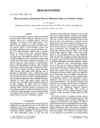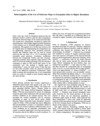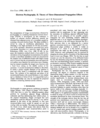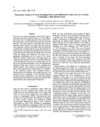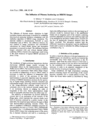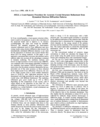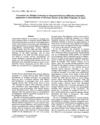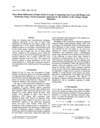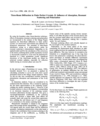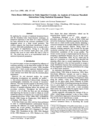issue contents
January 1998 issue

Cover illustration: Power spectrum of a high-resolution electron-microscopy image of NiAl <110>. The image calculation includes a realistic phonon spectrum by coupling the `molecular dynamics' and `multislice' simulation techniques. The diffuse background, satellite peaks and bands mirror the effect of thermal diffuse scattering and correlated atom vibrations. Courtesy of G. Möbus, T. Gemming and P. Gumbsch.
international union of crystallography



 journal menu
journal menu










